Aesthetics and Balance in East Asian Arts
1/40
There's no tags or description
Looks like no tags are added yet.
Name | Mastery | Learn | Test | Matching | Spaced |
|---|
No study sessions yet.
41 Terms
Handscroll
In East Asian art, a long, narrow, horizontally oriented painting on paper or silk. Handscrolls are stored wrapped around wooden dowels and are unrolled or viewing
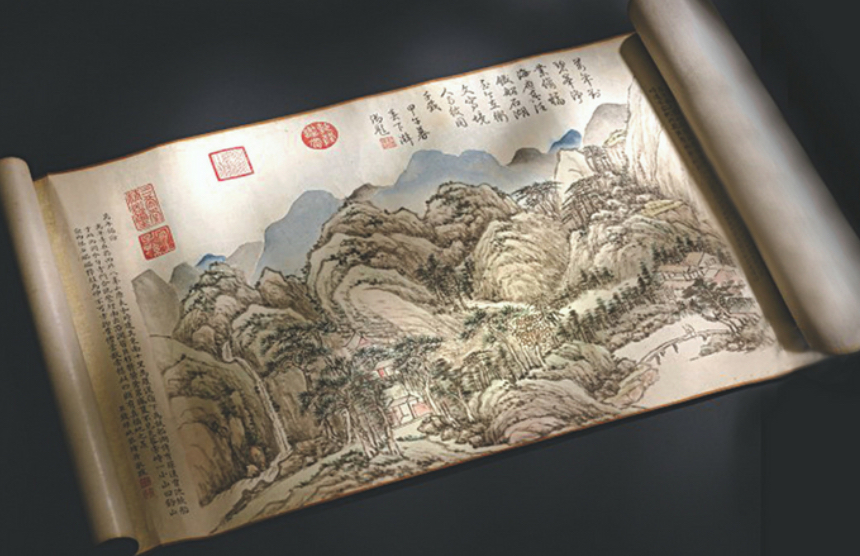
Pagoda
A religious building of East and Southeast Asia, especially a multistory tower with wide, overhanging eaves separating each level
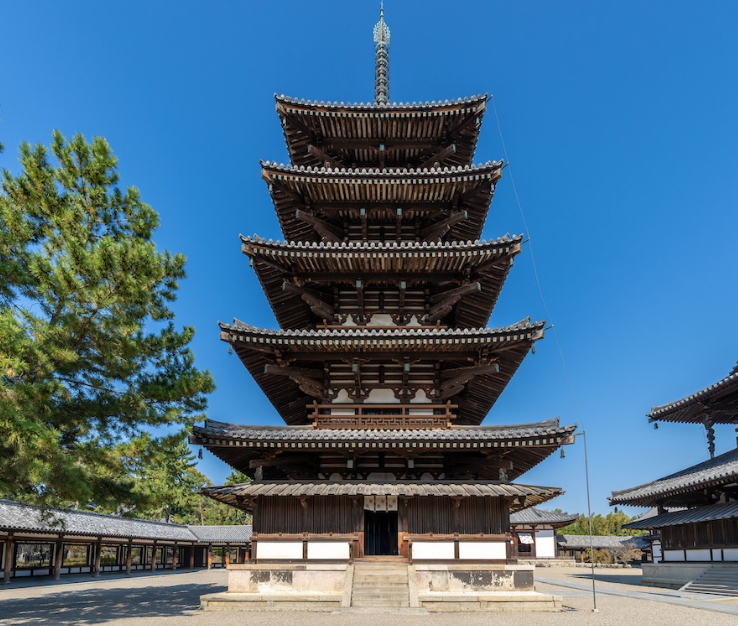
Porcelain
A very fine, translucent, white ceramic invented in China in the 8th century CE. The secrets of porcelain production were not discovered in Europe until the early 18th century, when European porcelain was pioneered at the Meissan factory in Saxony (modern Germany)
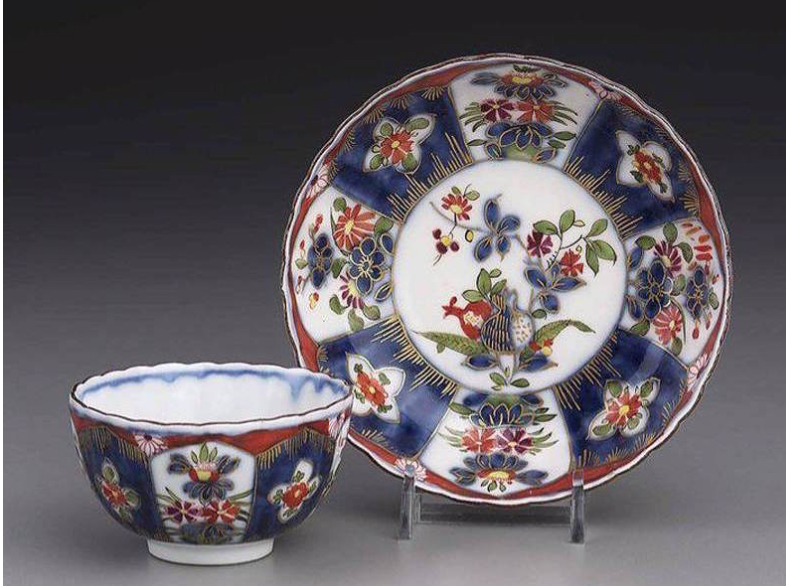
Haniwa
Terracotta figurines set on and around funerary tumuli during the Kofun period (third century CE to 538 CE) in Japan.
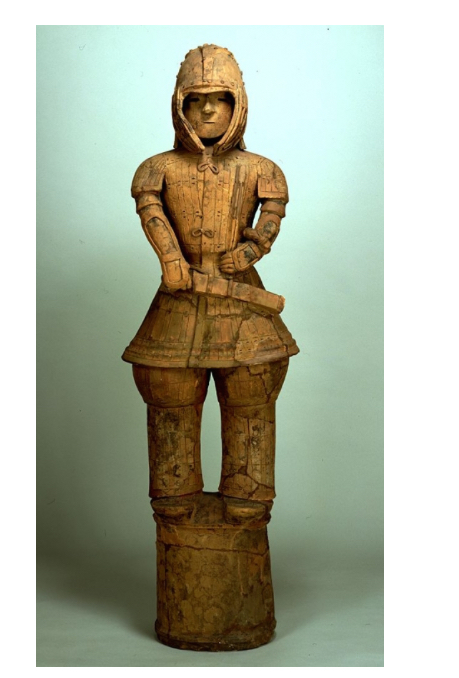
Wabi-Sabi
is a Japanese aesthetic that values rustic, early, unpretentious characteristics, natural materials, and acceptance of imperfection and transience
a rustic Japanese aesthetic preference that was very different from elite art in China
Karesansui or Zen Garden
(Also known as a dry landscape garden). Japanese Zen gardens are carefully composed arrangements of some or all of the following: rocks, moss, pruned trees and bushes, and gravel or sand raked into patterns. Zen gardens are normally fairly small, surrounded by walls, and meant to be appreciated from a single viewpoint outside the garden. Zen gardens were created in Buddhist temples and monasteries to serve as aids to meditation.
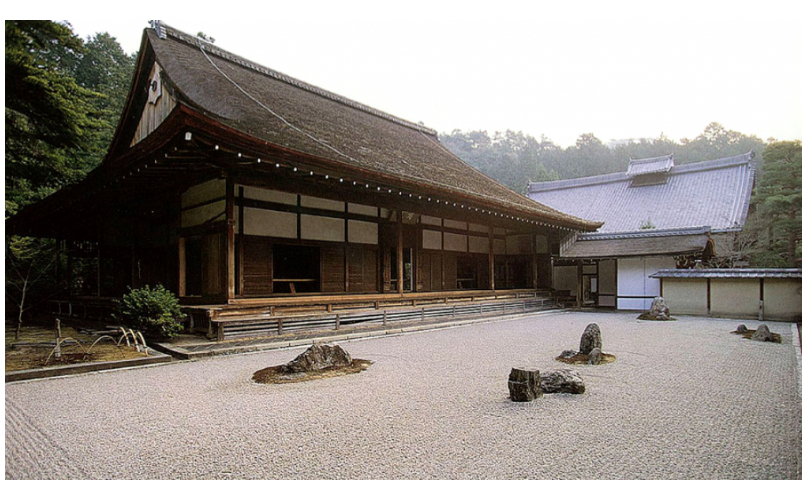
Chashitsu
A traditional Japanese tea house designed for the practice of tea ceremony, emphasizing simplicity and harmony with nature.
Fukinuki Yatai
is a traditional Japanese tea house designed for the tea ceremony, emphasizing simplicity and harmony with nature.
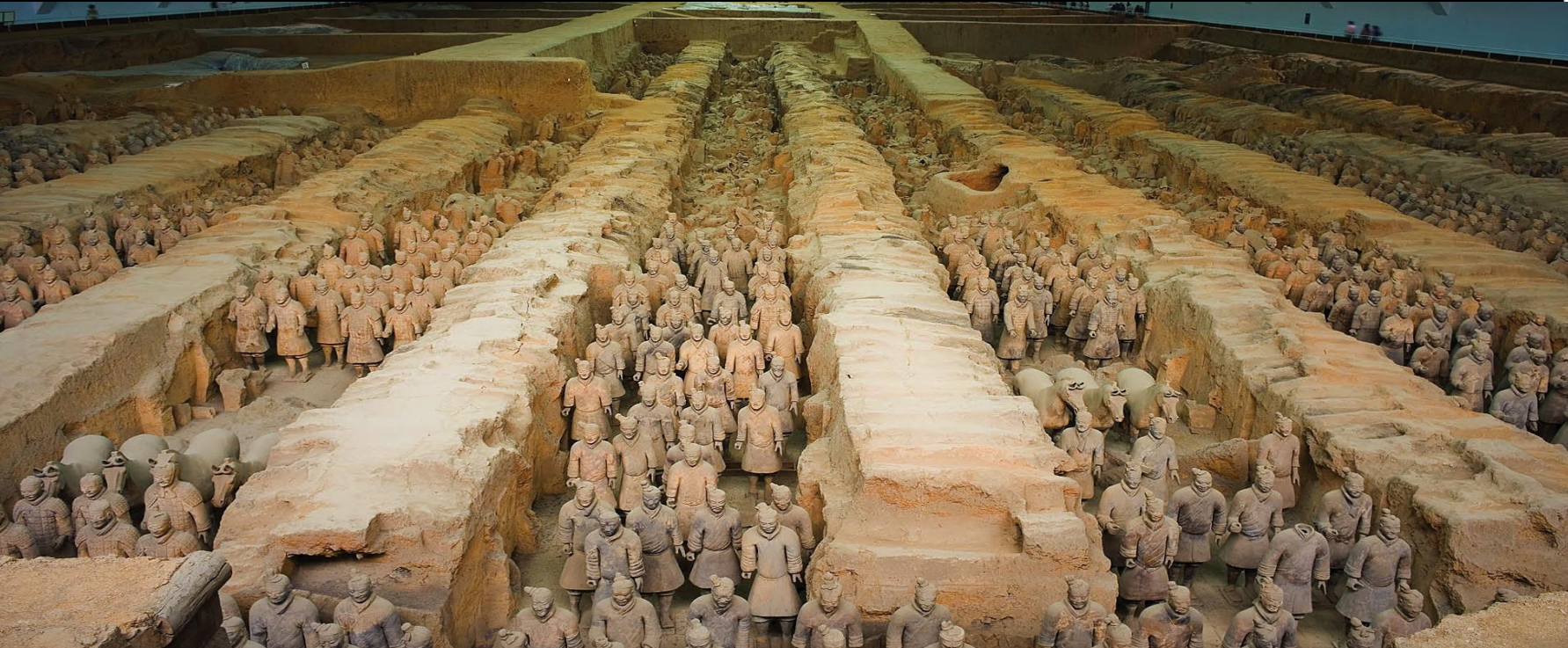
Army of the First Emperor of Qin, at Lintong, China, 3rd century BCE (China)
so far they’ve found around 10,000
they’re all individualized
would have been a very vivid sight
“not meant to be seen in earthy light”
they were intended to be hidden from the ppl in the living world
Terracotta warrior figures are the artifacts from the tomb of the 1st emperor of China that Americans are likely to have seen in person
clay figurines representing soldiers, each uniquely crafted, often placed in elaborate formations.
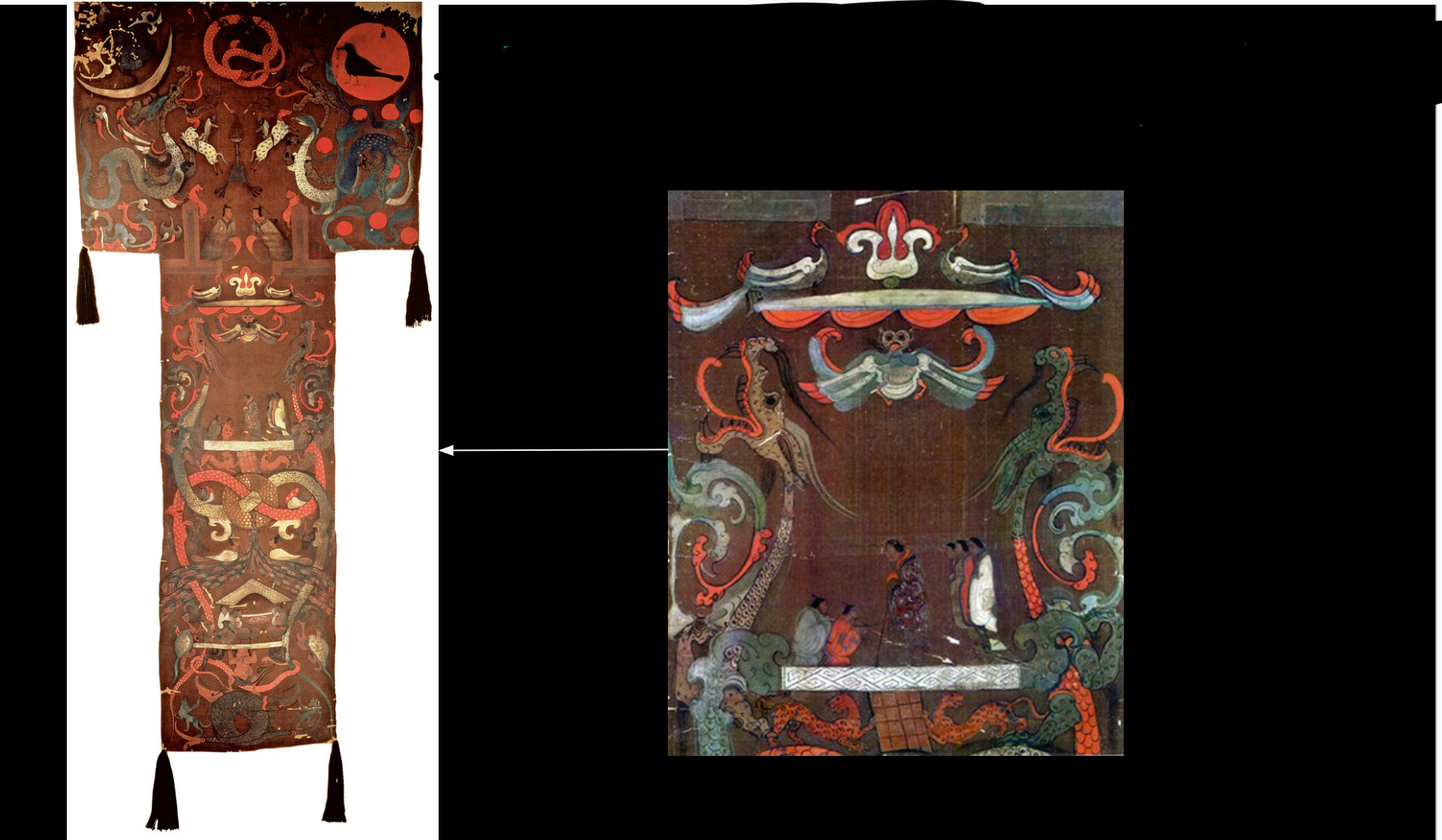
Funeral Banner of the Lady Dai (Xin Zhui), silk, 2nd century BCE (China)
The funeral banner is more or less a chart of Lady Dai cosmos. Heaven, hell, Lady Dai living, ppl mourning, and various ancestors are represented, illustrating the beliefs and social values of the time.
The banner visually represents the afterlife and social hierarchy, emphasizing the connection between the living and the dead.
They’ve learned alot from lady dai’s mummy
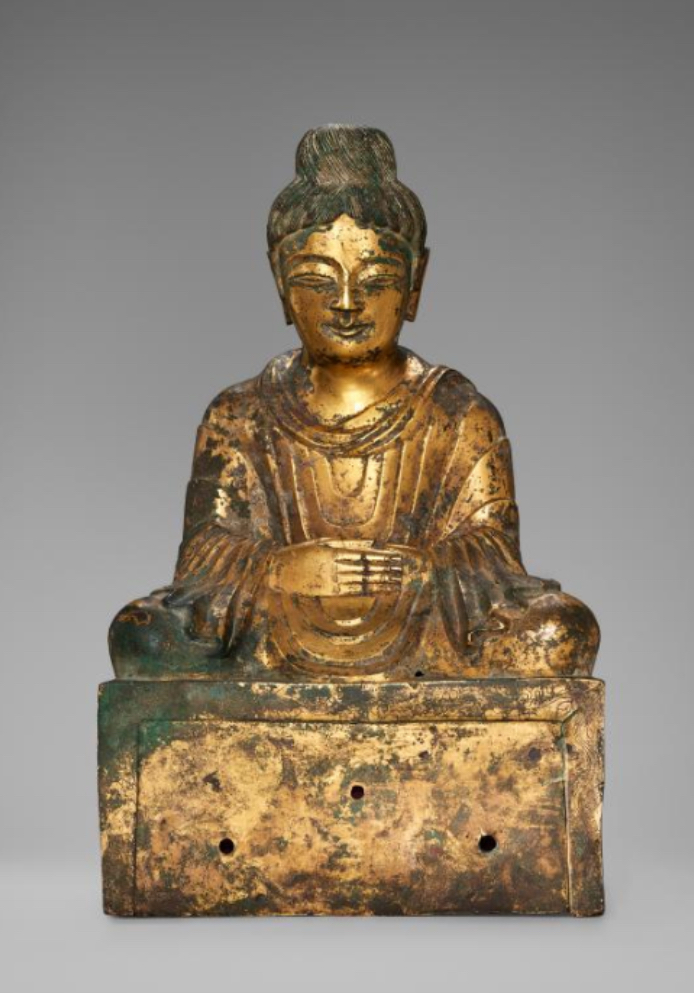
Seated Buddhe, gilt-bronze, 338 CE (4th century CE) (China)

Vairocana Buddha, disciples, and bodhisattvas, at Longmen Caves, China, 7th century CE
There is a big Buddha but there is also little caves where many of them have smaller Buddhas and stupas
Vairocana Buddha is a Buddha that has transcended all
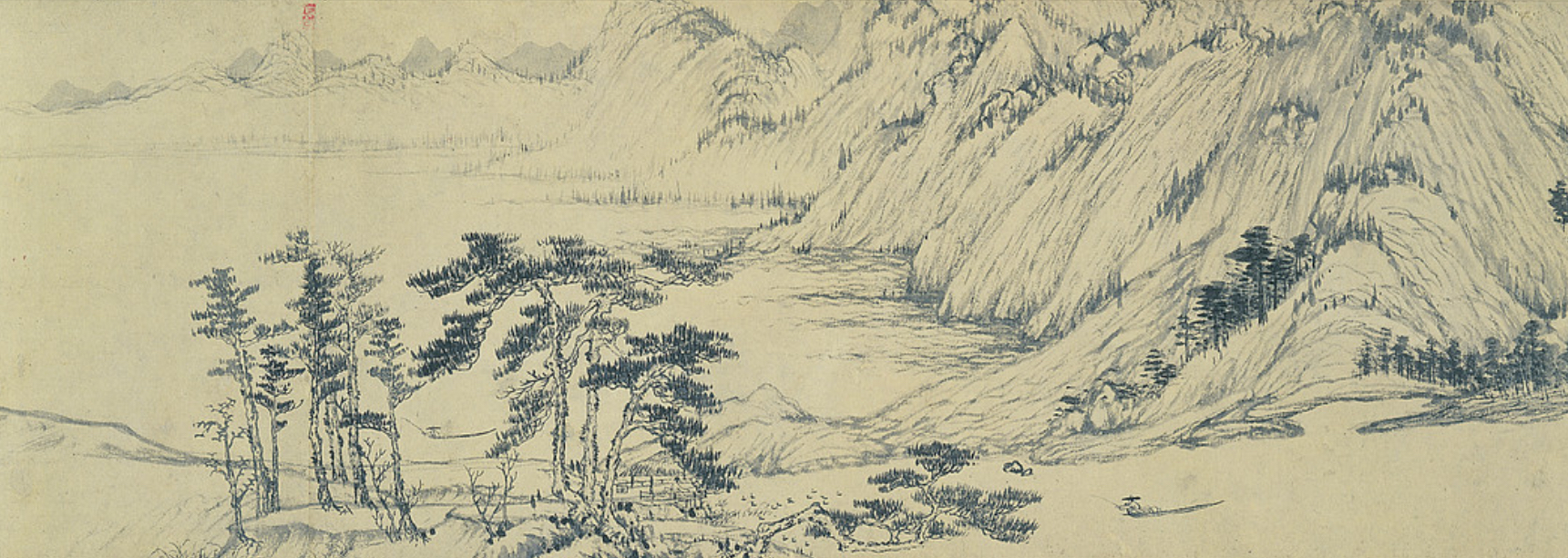
Huang Gongwang: Dwelling in the Fuchun Mountains, handscrolls, 14th century CE (China)
the focus is on nature and the beauty of it
landscape painting
abt 22 ft long
big landscape, tiny ppl, so more nature than ppl
in a scroll like this, your perspective continuously shifts. So you feel movement through the photo
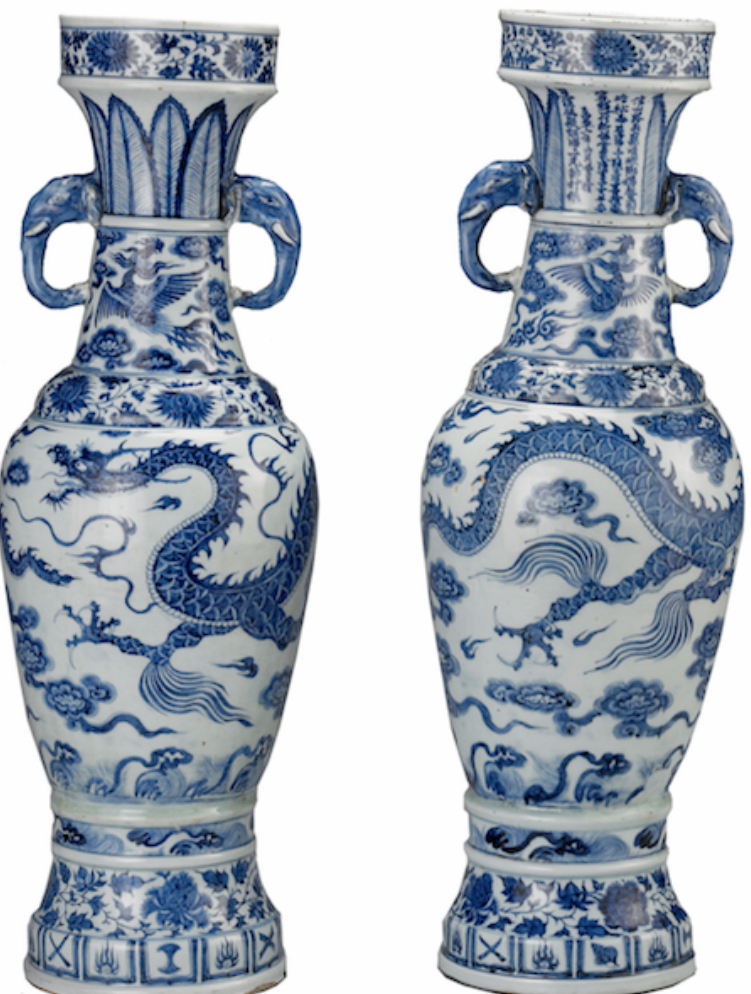
David Vases (porcelain), 14th century (China)
development of new poetry using porcelain
cobalt (produces the blue color) didn’t lose color in the heat
and is notable for its exquisite craftsmanship and vibrant blue patterns.
made for a Buddhist temple
abt 2 ft tall
has imperial year on it
best surviving old example of this old imperial wear
the decorations meant something
becomes important to the Mang dynasty
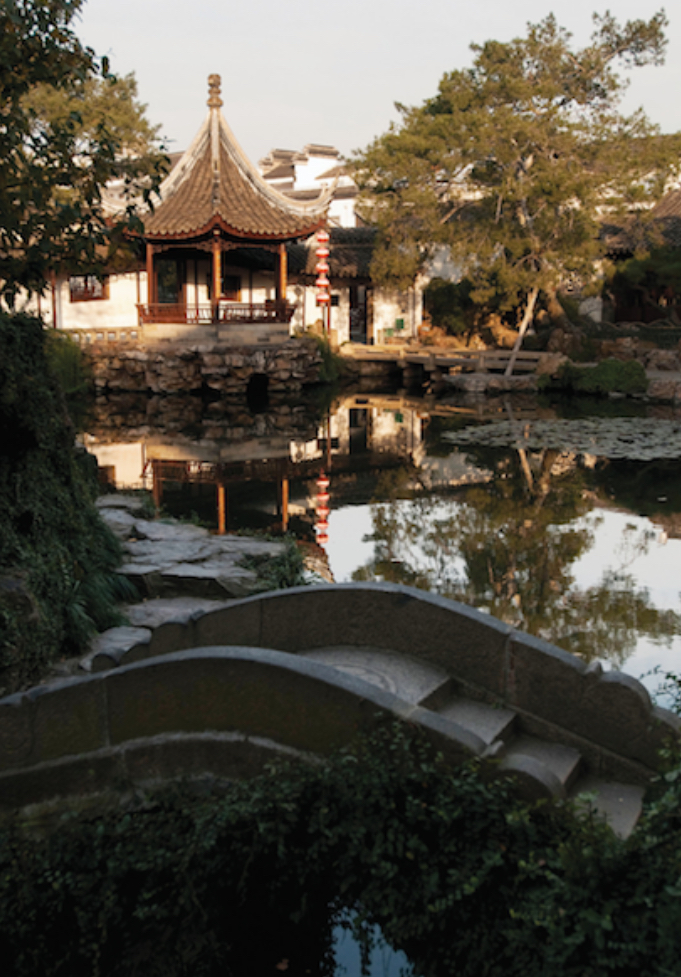
Shi Zhengzhi, Wangshi Yuan (Garden of the Master of the Fishing Nets) , 16th century and later, Suzhou (China)
Shi Zhengzhi is the man who renovated it
Wangshi Yuan is the name of the garden (Garden of the Master of the Fishing Nets)
These gardens are art
they are kinda minature landscapes
Also emphasize multiple perspectives
Kinda a similar idea to Huang Gongwang: Dwelling in the Fuchun Mountains (China)
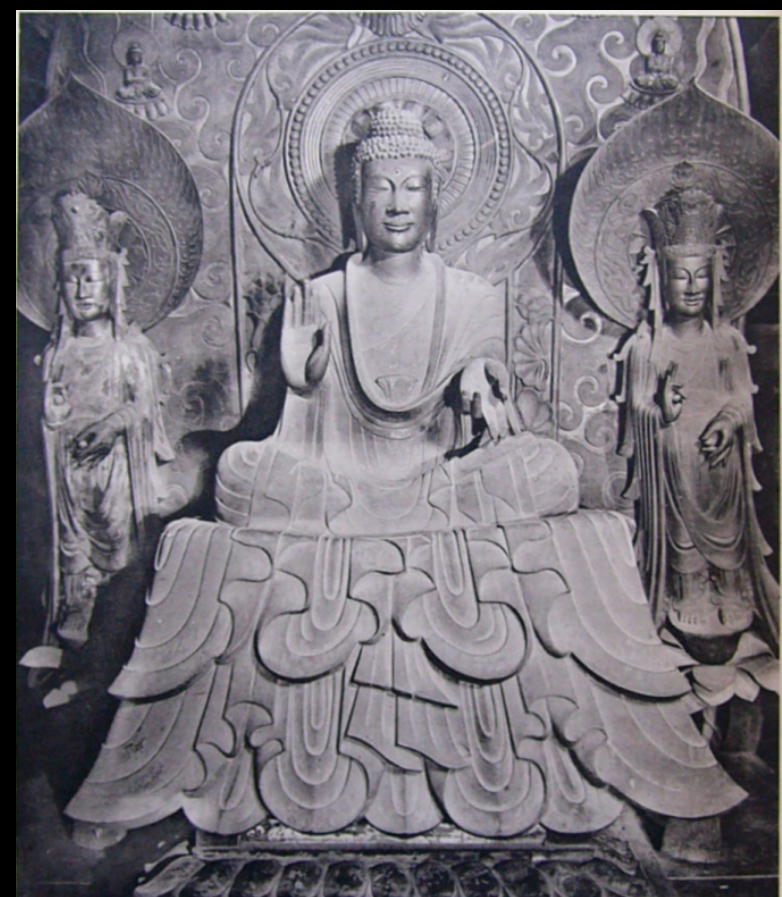
Shaka Triad, by Tori Busshi, 623 CE (7th century CE) (Japan)
is a notable sculpture representing Shakyamuni Buddha flanked by two bodhisattvas, exemplifying the beauty and balance of ancient Japanese Buddhist art.
commissioned by Prince Shotoku
representation of Buddha’s who’s seated, doing a do not fear gesture called abhayamudra, a symbol of protection and reassurance.
This statue is inside the Konda or main hall of the Horyu-ji Temple (oldest wooden building)
like the buddha inside the longmen caves (China) he’s a transcendent buddha
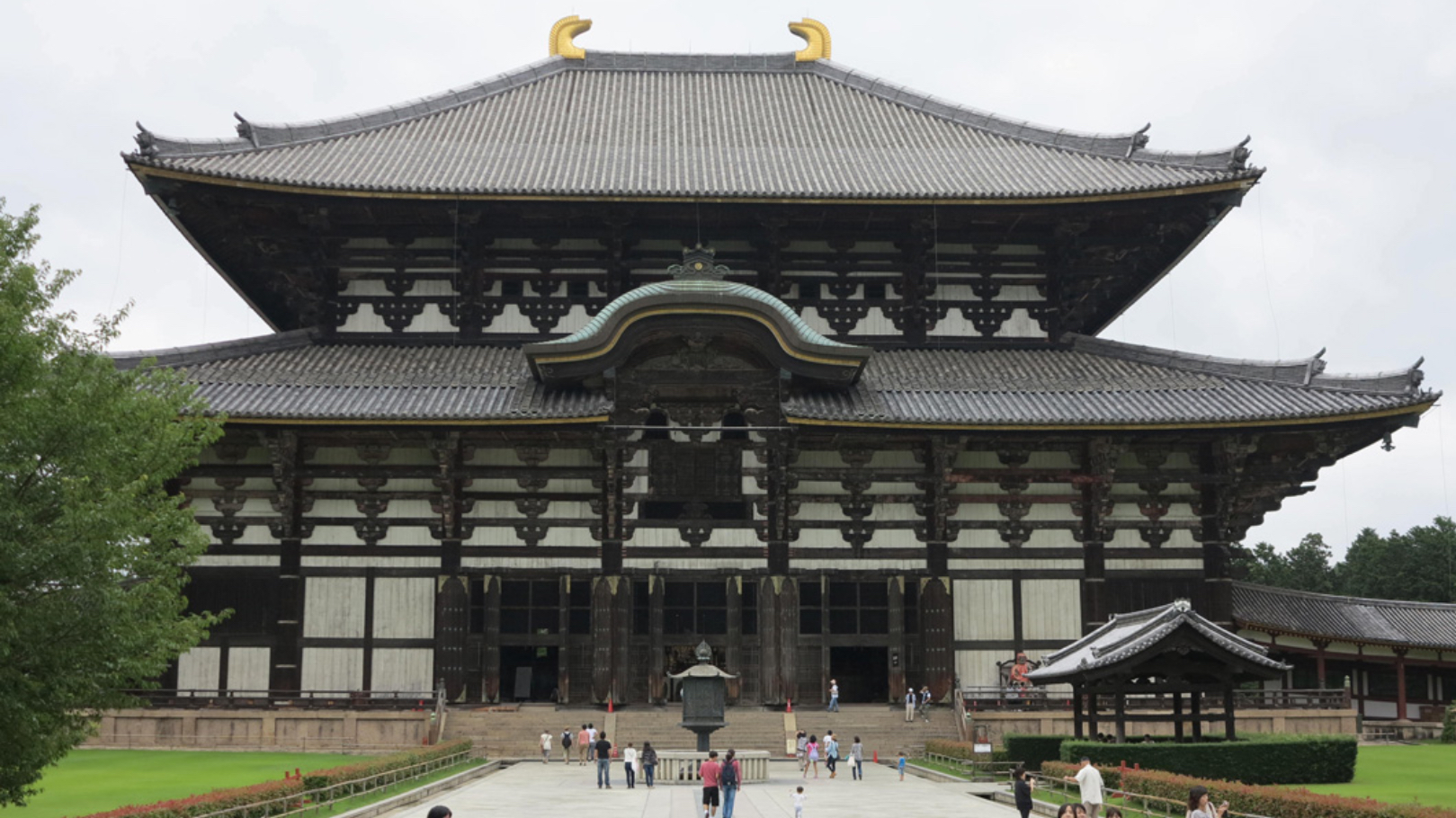
Great Buddha Hall, Todai-ji, original 8th century CE (Japan)
a significant engineering achievement
using post-and-lintel
Used eaves: are the lower edges of a rood that project beyond the walls of a building
Inside it is the Great Buddha, original 8th century
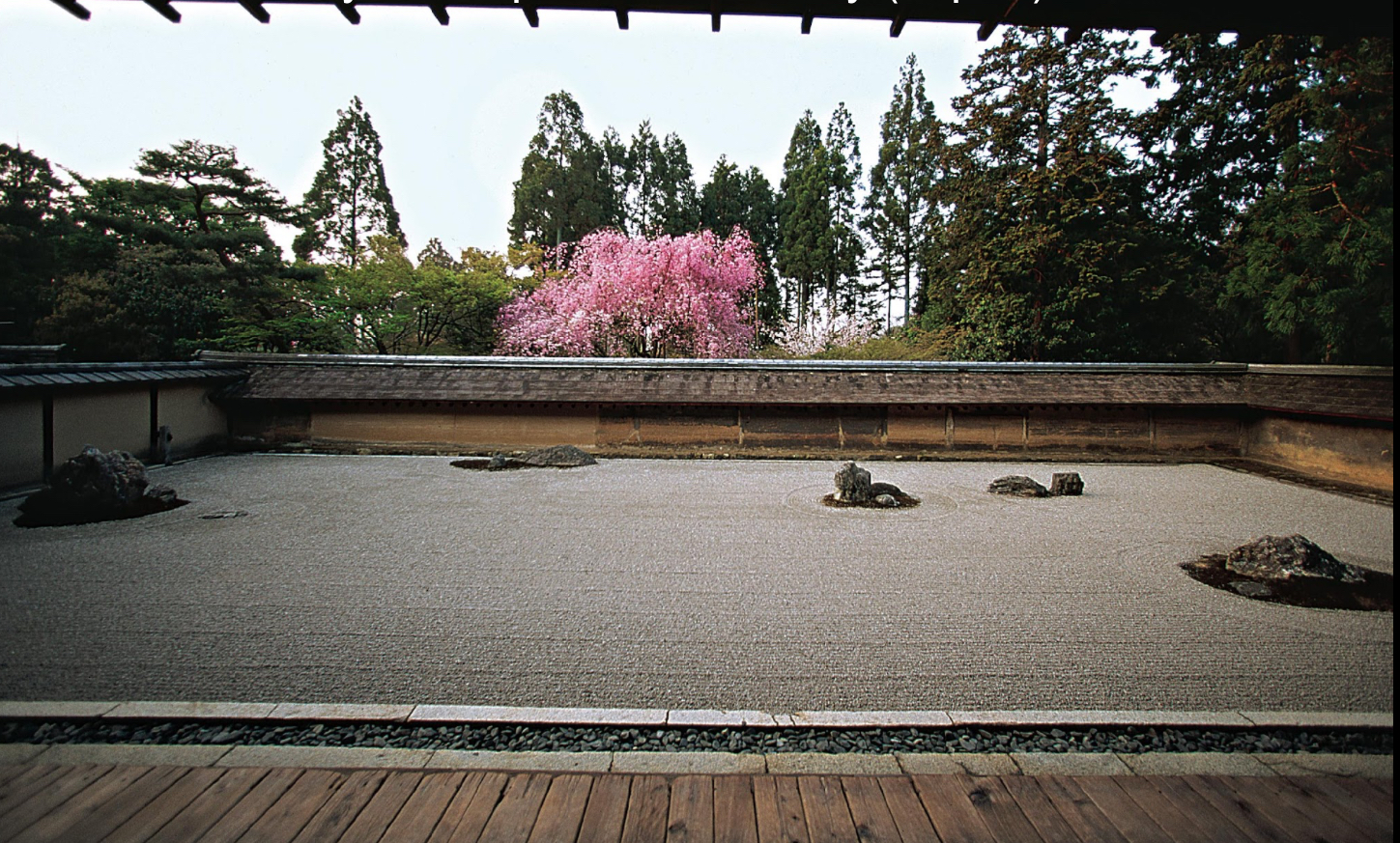
Karensansui (dry Zen) Garden, Ryoanji Temple, Kyoto, Japan, 15th century (Japan)
has a boundary that’s meant to focus your view on the plain garden
known as a dry garden
does not aim to pull you outside the garden (like the Chinese one is meant to). In this garden, you are meant to sit in one space for one POV.
meant for zen
basically a universe in 4 walls
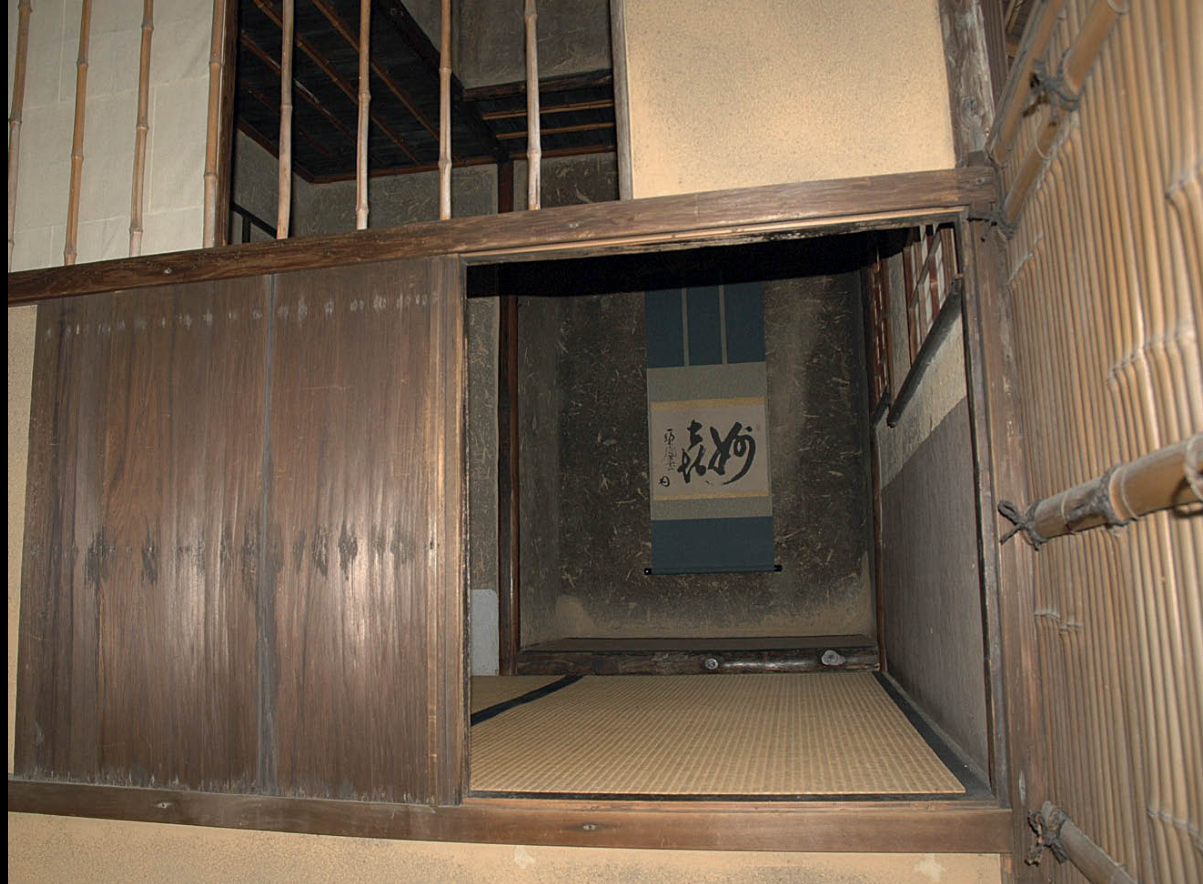
Sen no Rikyu: Taian teahouse, Kyoto, Japan, 16th century (Japan)
Sen no Rikyu is the most famous tea master
This is the oldest surviving chashitsu in Japan
only abt 9.3 square meters in size, exemplifying the principles of Wabi-sabi and simplicity in design.
the opening is only abt 2.5-3ft tall, so you can’t walk in, you need to crawl
The crawling was a way to humble ppl
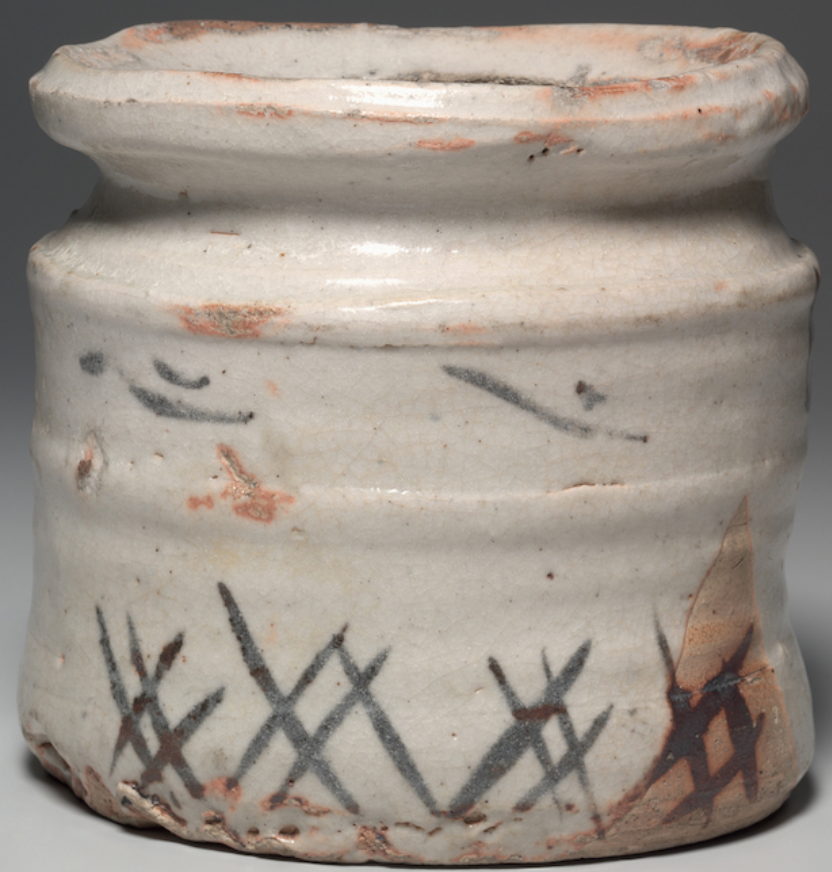
Kogan water jan (Shino glazed stoneware), late 16th century (Japan)
means ancient stream bank
not carefully finished
wabi and sabi
old and weathered
What did some western asian and european traders try to smuggle out of early imperical chinca
silkworm cocoons
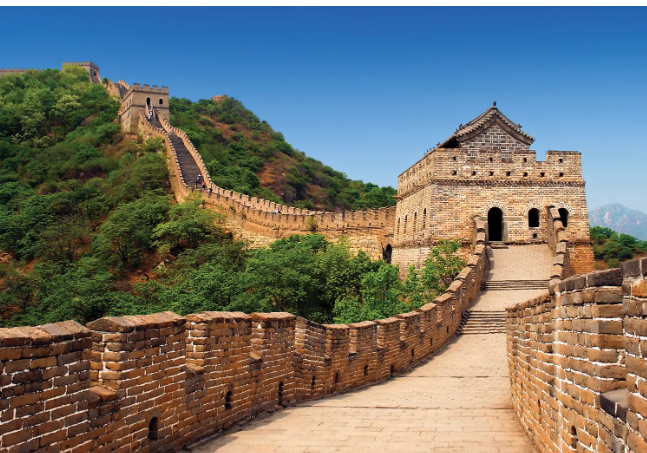
The Great Wall of Shi Huangdi, 3rd century BCE and later
“Great Wall of China”
This wall kept the mangolians out for around 1000 years
The silk roads of asia
were trade routes that connected East Asia with the Mediterranean, facilitating the exchange of goods, culture, and ideas.
this is how buddhism travels out of india
Buddhist religions, iconography, and monumental arts spread eastward (and westward) along the ___
Silk Roads
Early burials from the Qin and Han Dynasties provided evidence of
rich court culture, with survivals of sculptures, silk textures, and other arts
The Silk Road
names only as such in the 19th century, is a network of trade routes harkening back to the 2nd century BCE, connected territories from eastern China to southern Europe and north africa
mausoleum
a tomb marked by some kind of monument
Auspicious
related to luck or fortune, often used in the context of rituals and art to symbolize positive outcomes.
a sign of good fortune and future success
Eaves
overhanging edges of a roof that project beyond the walls, often used in East Asian architecture to protect from rain and provide aesthetic balance.
are the lower edges of a roof that project beyond the walls of a building
Circumambulation
The act of walking around a sacred place or object. Circumambulation is common in Hindu and Buddhist worship, and is also practiced in Islam, Judaism, and Chrisitanity
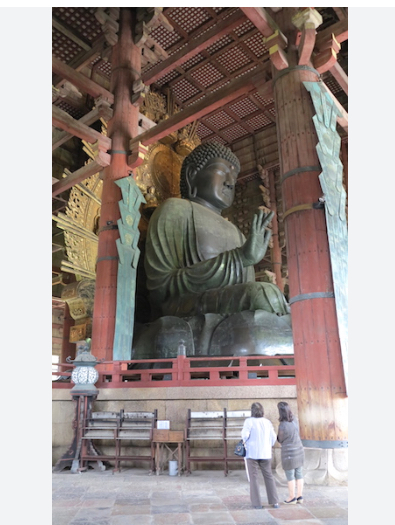
The Great Buddha, original 8th century, (Japan)
inside of Great Buddha Hall
at the time it was the largest bronze sculpture that we know of
found to have an emperor sword.
kinda a similar idea to having Trajan’s ashes at the bottom of the Column of Trajan
Compare the Kogan water jar (Japan) to the David Vases (China)
Both are significant examples of porcelain art, showcasing unique regional styles and uses in East Asian culture. The Kogan water jar reflects Japanese aesthetics with its simplicity and form, while the David Vases exemplify Chinese craftsmanship through intricate designs and vibrant colors.
Vaircana Buddha
the cosmic, universal Buddha whoo presides over infinite worlds, transcending time and space
Vajradhara, the embodiment of enlightenment and the source of all Buddhas.
Monastery
is a community of men or women (monks or nuns), who have chosen to withdraw from society, forming a new community devoted to religious practice
Difference between the meaning of Wabi and Sabi
Wabi refers to a rustic, austere beauty that embraces simplicity and imperfection, while Sabi denotes the beauty of age and the natural cycle of life, emphasizing the passages of time.
Murasaki Shikibu
is the author of "The Tale of Genji(a novel abt the lives at ladies at court),”considered one of the world's first novels. She was a prominent figure in the Heian period of Japan, and her work explores themes of love, beauty, and the transience of life.
Ushnisha
Buddha’s crown. found in most iconic representations of the Buddha.
Nimbus
forehead dot
Mudra
hand symbols
Mandala
geometric halo symbolize universe
Budhisrattas
ones who can reach Nirvana but chose not to